Pike push-ups are a highly effective exercise that focuses on strengthening the shoulders while developing the necessary foundation for handstand push-ups.
In this article, we will explore the proper technique for performing pike push-ups, discuss the muscles targeted, and delve into the numerous benefits associated with this exercise.
What is a Pike Push-up?
A pike push-up involves lowering your head from a downward dog position until it touches the ground, then pressing back up to the start position.
It is a great exercise to put more emphasis on the shoulders and start building the strength required for a handstand push-up.
How to Perform a Pike Push-up
Start Position
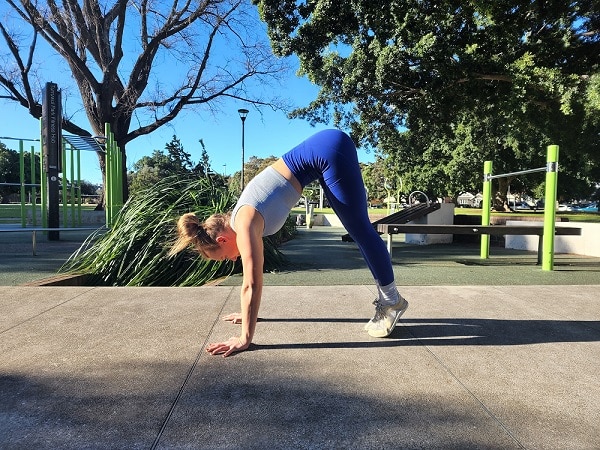
- To begin, place your hands on the ground, shoulder-width apart.
- Assume a downward-facing dog position with your buttocks in the air and your feet grounded.
Yoga practitioners may find this position familiar. - Ensure that your arms are positioned overhead, slightly in front of your face.
If flexibility is a concern, feel free to bend your knees or rest your feet on an elevated object.
Execution
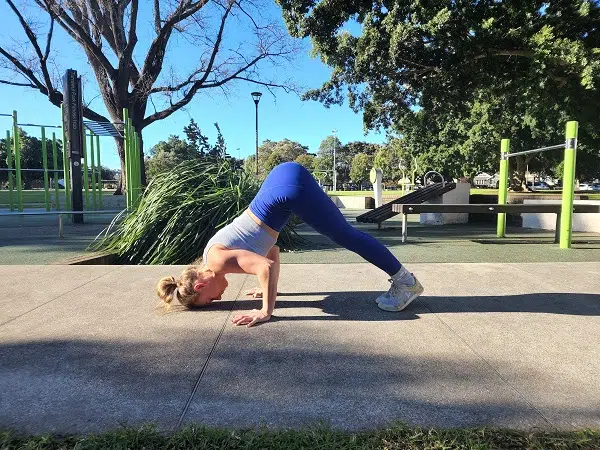
- Lower yourself under control, until the top of your head touches the ground.
- Hold for a second, then return to the start position.
Pike Push-up Form
Pay attention to your pike push-up form: elbows should stay in line with your hands throughout the movement, don’t flare them out.
The forearm should remain vertical throughout; this gives better carryover to handstand push-ups.
This will focus on your triceps, as well as keep your shoulder joint stable.
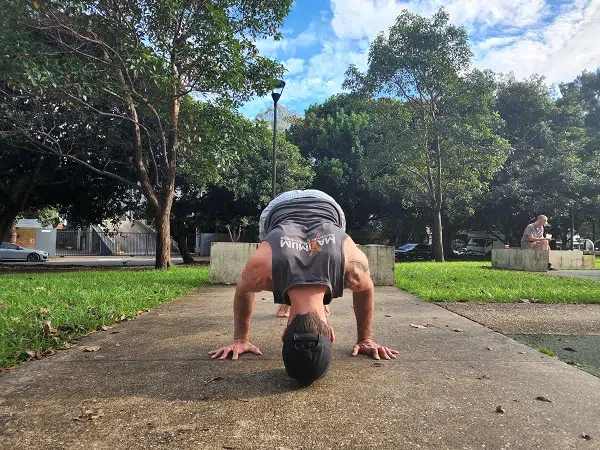
Full Range of Motion
The full range of motion is all the way down until your head touches the floor and all the back way up.
Keep Your Upper Body Straight
You should be able to draw a straight line between your hip, shoulder and ear throughout the movement.
Breathing
Inhale during the eccentric phase (lowering yourself), and exhale during the concentric phase (pushing yourself back up).
Try to breathe through your stomach rather than your chest to get more strength from your abdominal muscles.
Pike Push-up Benefits
Pike push-up benefits include:
- it’s a great progressive exercise that will allow you to build the foundations for handstands and handstand push up training
- it build strength in the shoulders, wrists and arms
- it helps build a stronger core
Pike Push-ups Muscles Worked
Primary
- Deltoid anterior (front)
- Triceps brachii
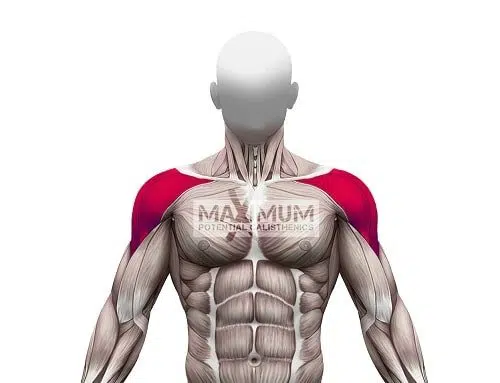
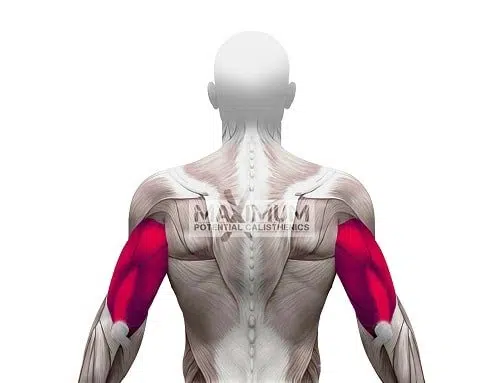
Secondary (Synergists)
- Pectoralis major clavicular (upper)
- Deltoid lateral (middle)
- Trapezius, middle and lower
- Serratus anterior, inferior (lower)
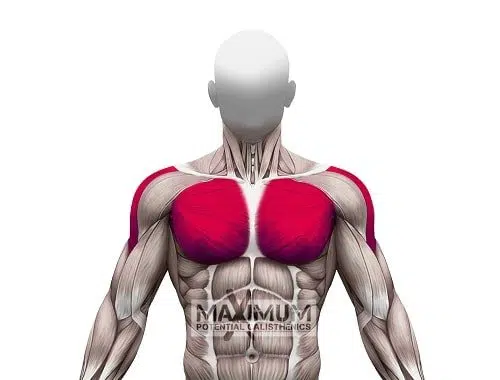
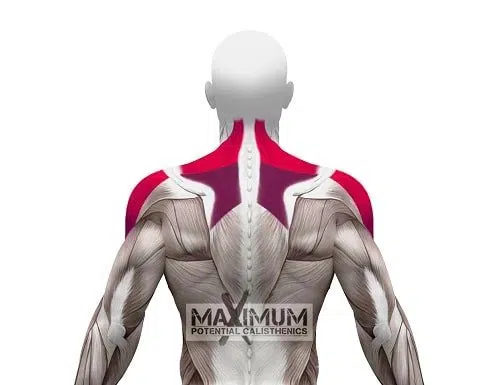
Pike Push-up Progression / Regression
Elevated Pike Push Up
The elevated pike push up involves elevating your feet on to a raised object such as a low wall or bench, and pressing down through your shoulders. Then moving back up to the start position.
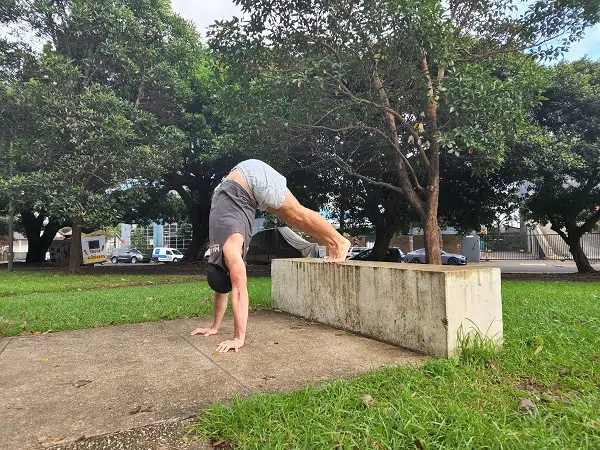
The higher your hips are, the more weight will go through your shoulders.
If you lack flexibility, then simply put your feet on an elevated object.
Conversely, the lower your hips are, the less weight will go through your shoulders.
Elevated Pike Push Up Video - Feet Elevated
Pike Push Up Hand Position
Moving your hands closer together will increase the difficulty a lot by emphasising the triceps.
Make sure you’re comfortable with close-hand decline push-ups before attempting this one.
Range of Motion
Performing this exercise with your hands on two elevated objects, with a place for your head to pass through will make the exercise considerably more difficult.
This puts a lot more pressure on the shoulders, so is only advised for advanced athletes with strong stabilisation muscles.
Decreasing the range of motion will make it easier, don’t move onto handstand push-ups until you can get your head to the floor and back.
Benefits of Pike Push-Ups
- Progressive exercise for developing handstand and handstand push-up skills
- Strengthens the shoulders, wrists, and arms
- Enhances core strength and stability
Conclusion
Pike push-ups are an excellent exercise for targeting the shoulders and building the necessary strength for advanced movements like handstand push-ups.
By following proper technique, focusing on the key muscles engaged, and understanding the progression options, you can optimise your training and reap the numerous benefits of this exercise.
Pike Push-up to Handstand Push-up Guide
Download our free guide to demonstrate how to progress your pike push-ups to a handstand push-up.



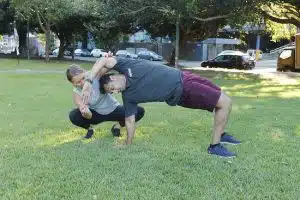
2 Responses
Those elevated or not Pike Press ups inclose Target your rear delts, what’s your answer on that?
Hi Haden, the rear delts are the antagonist muscle in this exercise; meaning that they are lengthening and should be relaxing during the Pike Push-up.
To target the rear delts, you’re better to do inverted rows or straight bridges.